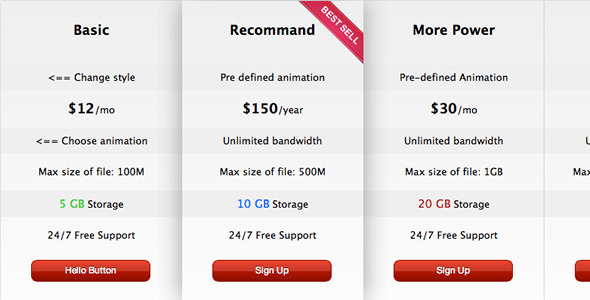
Managing inventory across multiple stores and warehouses presents unique challenges for apparel retailers. Our comprehensive enterprise-grade system streamlines multi-location operations through integrated tools for stock control, point-of-sale transactions, and supply chain management—all tailored specifically for clothing businesses dealing with size variations, seasonal collections, and rapid inventory turnover.
Detailed Business Purpose and Scope
This specialized apparel POS system goes beyond basic transactions by addressing the core complexities of fashion retail: seasonal fluctuations, size/color matrix management, and multi-channel fulfillment. It provides real-time synchronization between physical stores, warehouses, and e-commerce platforms using barcode scanning technology to eliminate manual counting errors and discrepancies.
Resolving Common Clothing Retail Challenges
- Size/Color Matrix Tracking: Automatically track identical items across dozens of size/color combinations
- Seasonal Inventory Waves: Pre-configure collections with automated markdown schedules for clearance cycles
- Multi-Location Stock Balancing: Intelligent transfer orders based on store-level sales velocity
- Supplier Performance Monitoring: Track lead times and defect rates by vendor to optimize purchasing
Optimized for Specific Apparel Business Models
Retail Chains and Boutique Networks
For stores with 3-20+ locations, the system maintains centralized style databases while allowing store-specific pricing and promotions. Example workflow: When a bestseller runs low at Downtown location, automatically generate transfer orders from overstocked suburban stores rather than reordering.
Wholesale Apparel Distributors
Manage showroom sales, bulk fulfillment, and outlet store operations through unified inventory pools. Key features include multi-currency pricing tiers, minimum order quantities for wholesale clients, and batch processing for bulk shipments.
Manufacturers with Retail Channels
Direct-to-consumer brands sync factory production schedules with retail stock levels. As new seasonal lines complete manufacturing, inventory automatically becomes available across flagship stores and partner retailers.
Comprehensive Workflow Implementation
Clothing-Specific Inventory Setup
Create attributes-based product hierarchies: Category > Collection > Style > Size/Color combos. Barcode generation integrates UPC/EAN standards for consistent scanning across locations. Unique features include:
- Size curve profiling for optimized allocation
- Visual style libraries with garment images
- Material composition tracking for sustainability reporting
Multi-Tier Location Architecture
Implement hub-and-spoke models with parent/child relationships between central warehouses and retail outlets. Set reorder thresholds with smart algorithms that consider:
- Historical sales velocity by location
- Local demographic preferences
- Proximity to warehouse
Integrated Supply Chain Operations
Automate purchase orders based on predicted demand and current stock using:
- Supplier scorecards evaluating delivery compliance
- 3-way PO matching (order/receipt/invoice)
- QR code-based receiving workflows
Apparel-Focused POS Capabilities
Mobile POS stations enable associates to:
- Scan items anywhere in-store
- Check warehouse stock for out-of-size requests
- Process exchanges with integrated return authorization
- Apply automatic promotions like “Buy 2 Accessories Get 15% Off”
Actionable Implementation Strategies
Sizing Matrix Implementation
During onboarding, configure size scaling across regions:
- Map international size conversions (US 8 = EU 38)
- Set color-coded tagging systems
- Establish minimum display quantities per size
- Create substitution rules for out-of-stock items
Seasonal Changeover Protocol
Automate collection transitions using phased workflows:
- 45 days before season end: Automatic markdown sequencing begins
- At 30% remaining stock: Trigger consolidation to outlet locations
- New collection release: Auto-activate displays and pricing
Real-World Retail Chain Scenario
Urban Fashion Co. (12 locations) stabilized stockouts by:
- Implementing RFID tagging for all garments
- Setting automatic transfers when style/size combo dips below floor quantity
- Redirecting online orders to fulfill from stores with overstock
- Using sales data to right-size initial allocations for new collections
- Creating vendor portals for direct consignment stock replenishment
Result: 28% reduction in dead stock and 19% increase in full-price sales within two seasons.
Mobile Optimization for Modern Retail
The responsive platform enables:
- Inventory audits via handheld scanners
- Clienteling tools with purchase histories on tablets
- Real-time lookups for “find in store” requests
- Offline mode for markets/pop-up shops with auto-sync
Financial Control Mechanisms
Specialized apparel reporting includes:
- Style-level profitability accounting for discounts and returns
- Shrinkage analytics by category/location
- Customer acquisition cost per marketing campaign
- Vendor performance impacting margin calculations
Implementation Roadmap
- Phase 1: Barcode standardization + central database setup (2 weeks)
- Phase 2: Location configurations + staff training (3 weeks)
- Phase 3: Historical data migration + inventory baselining (1 week)
- Phase 4: Pilot location rollout with feedback optimization (4 weeks)
- Phase 5: Enterprise-wide deployment + analytics configuration (Ongoing)
Successful implementation typically shows ROI within 90 days through stock reduction (15-30%), shrinkage decrease (8-12%), and labor efficiency gains (20+ hours weekly). Integration capabilities exist with major e-commerce platforms, ERP systems, and payment processors for unified operations.


